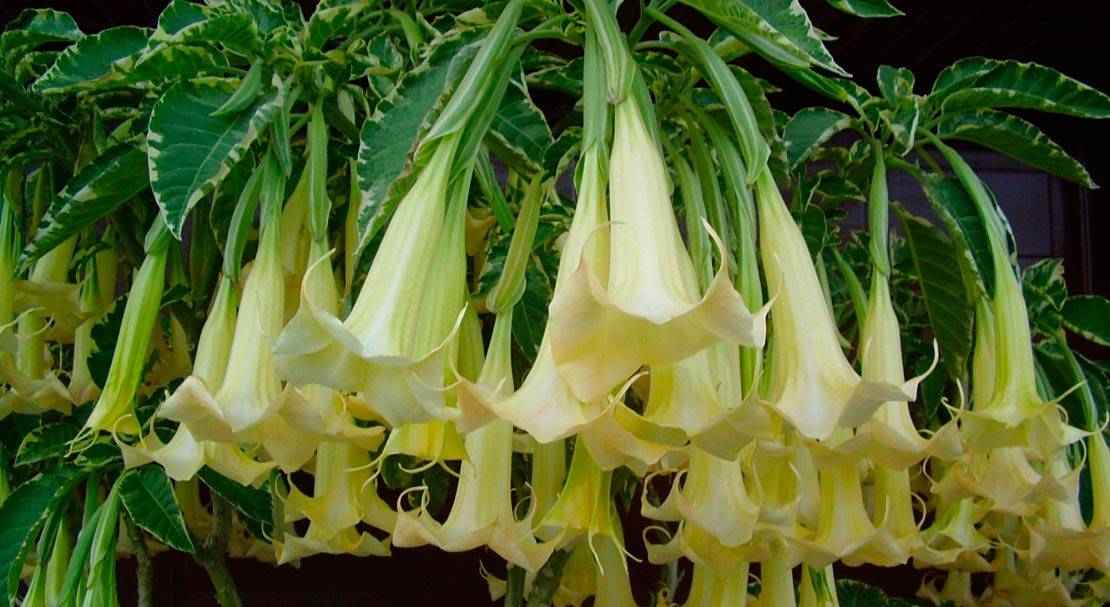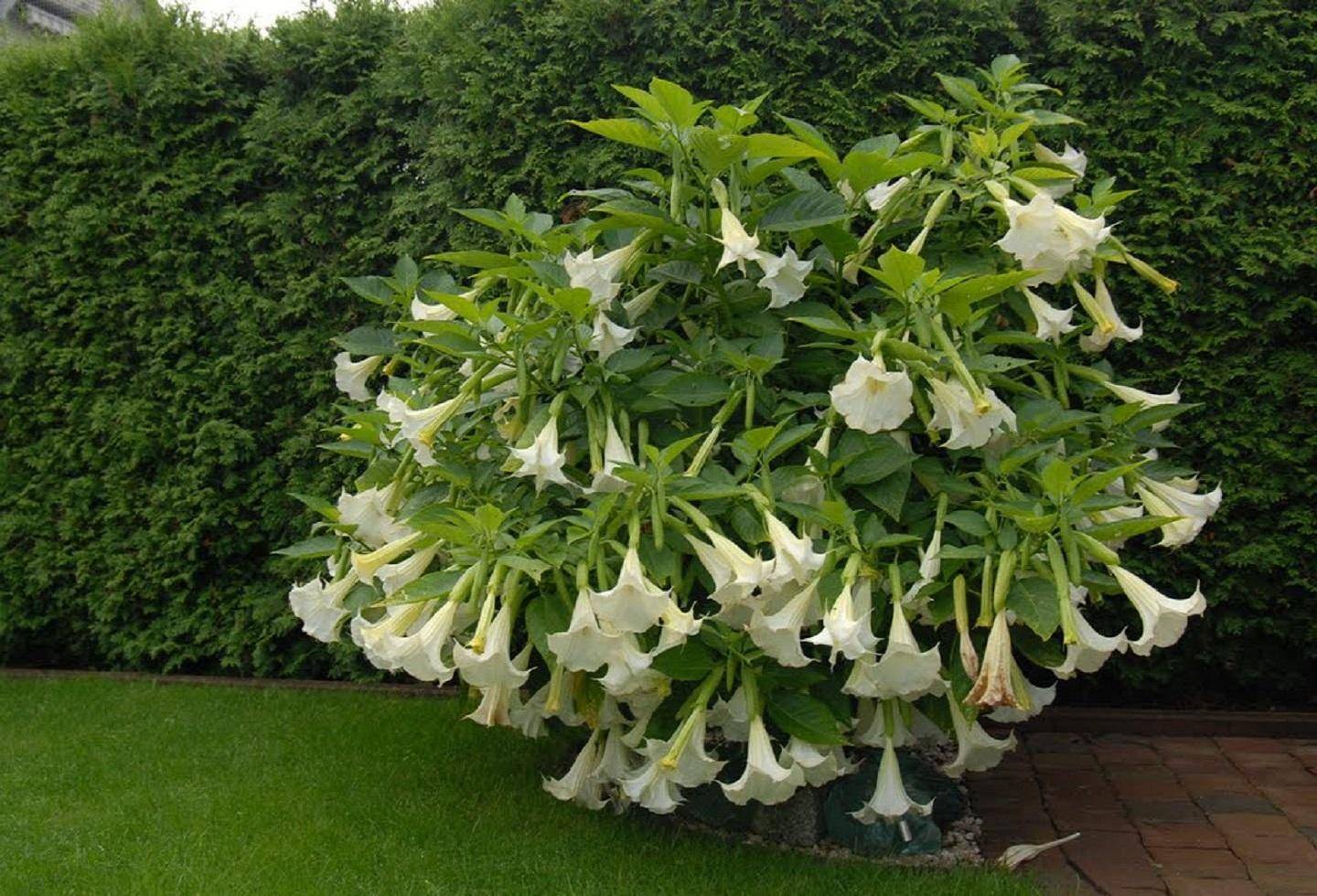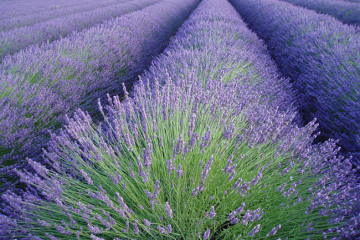Brugmansia - when the flower blooms
Content:
Brugmansia is a flower that is distinguished not only by its beautiful name, but also by its incredibly attractive appearance. Due to its large size, it is most often grown as a garden plant. The flower achieved its popularity among gardeners due to its high decorative effect and undemanding care.
Brugmansia - what is this flower
Brugmansia is often called the intoxicating tree in literary works, since it contains a special substance that can intoxicate a person. Previously, Brugmansia belonged to the Datura genus, but later it was combined into a separate genus, which includes 7 different species. Brugmansia tree-like is most often grown by flower growers, but there are other forms.
Short description
Another name for the flower is angelic trumpets. This is the name of the plant due to the spectacular flowers of an unusual shape.
Botanical description of brugmansia:
- the shape of the plant depends on the species, it can be a bush, liana or tree;
- leaves are large, reaching 30 cm in length, ovoid, sometimes with slight pubescence, arranged in tiers on a tree;
- flowers are the main advantage of the plant. The shape of the flowers is bell-shaped, they are drooping, their length sometimes reaches half a meter. Color options: orange, red, lilac, snow-white;
- varieties of flowers: double, semi-double, simple. In one season, several dozen buds bloom on the tree at once;
- flowering period - from early summer to mid-autumn;
- the aroma of flowers is bright, pleasant, fragrant, most pronounced in the evening;
- in natural conditions, the plant reaches 6 m in height, cultivated brugmansia - no more than 2 m.
Angel trumpets are naturally grown in the rainforests of South America. The cultivation of the flower began only in the 19th century. Among these types, the most common is fragrant brugmansia. Breeders are working on breeding new varieties that differ not only in an improved appearance, but to a greater extent on strengthening the immune system.
How to care for brugmansia at home
The brugmansia plant, planting and caring for which requires observance of nuances, will thank you with a long flowering. First of all, because this plant is southern, practically not adapted to the northern climate, therefore it is grown mainly in the south of the country.
Illumination and temperature conditions
Caring for brugmansia, like any other plant, begins with adjusting the light level. The intoxicating tree is extremely fond of light. He needs him at all seasons. If there is little light in winter, the flower should be removed to a cool shaded room, providing it with a dormant period that will last until spring. Angel trumpets do not tolerate low temperatures; already at 5 ° C, most species die. But the heat also adversely affects the condition of the flower.The optimum temperature is 20-25 ° C.
Watering rules and humidity
In spring and summer, when the plant is developing especially actively, increased watering is required. During the flowering period, the amount of water should be slightly reduced, and in winter the flower should not be watered at all. The soil should always be slightly moist, brugmansia does not tolerate drying out.
Spraying is carried out in extreme heat and drought. This procedure requires great care, only leaves are watered, flowers cannot be touched. You can moisten the flower only late in the evening. This will help prevent sunburn.
Top dressing and soil quality
For a cultivated brugmansia flower, home care should be of high quality and versatile. The flower requires a nutritious soil of any composition, but always loose. It must pass water and air well. In the planting hole or barrels in which it is planned to grow the intoxicating tree, it is best to pour a soil mixture of two parts of peat, one part of peat and one part of loamy soil.
For planting in flowerpots, a complex composition for flowering plants pre-fertilized with minerals and organics is also suitable. Before planting brugmansia, you need to put a good layer of drainage on the bottom of the pit or container. Its thickness will depend on the size of the tree.
Choosing the right soil to grow a powerful, flowering plant is not enough. It is also necessary to decide on the complex of fertilizers that the intoxicating tree will receive. It is important to know what and how to feed brugmansia during flowering, before and after it. Throughout the growing season, feeding should be carried out weekly. You can use standard fertilizers for flowering houseplants at the dosage indicated by the manufacturer.
When only fertilizers for flowering crops are used during the flowering period, you can not wonder why the leaves of brugmansia turn yellow. The answer is simple - it lacks potassium and phosphorus. You should always remember this and follow this rule at least until the middle of the flowering period.
Irregular and improper feeding can cause other problems for the plant:
- stopping / slowing down the growth of a flower;
- the appearance of signs of serious illness;
- deformation of the sheet plate;
- lightening of leaves, the appearance of stripes, spots on them and the loss of general decorativeness.
You need to take care of the flower carefully, devoting time to each period. The composition of the soil and regular fertilizing are extremely important for maintaining the health and appearance of the plant.
Flower container size
The pot in which the plant will develop should be selected based on its parameters. Since the tree grows quite quickly, it is better to take a flowerpot with a good supply and wide enough, since the root system of the flower is fibrous, located close to the soil surface.
Pruning and replanting
Correct pruning is one of the secrets to good flowering. Basic rules to be followed:
- pruning is most often carried out in the fall before sending the tree for wintering, but no later than the beginning of March, at this time the season of active growth and development begins;
- only diseased, damaged and dry branches are completely removed. The rest are shortened by no more than 1/3;
- young plants grown from seeds or cuttings can only be cut off the next year after flowering, there should already be several Y-shaped forks on the bush, which must remain after each cut;
- it is necessary to try to leave as many upper side branches as possible, growing almost horizontally.It is on them that flowers are formed.
If the plant is grown in a tub, then in the first year several transplants will be needed at once as the earthen coma is entangled with the root system of the plant. In the future, the transplant is carried out annually in the spring, at the very beginning of the growing season. It is produced by transshipment from one container to another.
Planting brugmansia in the open field
Many growers grow brugmansia as an annual plant. However, this deprives them of the opportunity to fully enjoy the beauty and lush flowering of the plant in the garden. Yes, and it's a pity to lose such beauty, knowing that you can keep it indoors in winter, and in the summer start planting and caring for brugmansia again, planting it in open ground.
How to care for her in summer and winter
For the winter, the flower is harvested quite early. As soon as the night temperature begins to fall below 10 ° C, the plant is transferred first to the veranda for adaptation, and then to the house or room where it will spend the winter. There should not be an abrupt transition, it is better to increase the period of being in intermediate conditions. If an intoxicating tree grows in a garden area, it must be carefully dug out without damaging the root system and, together with an earthen lump, placed in a barrel or pot for wintering. It is transferred to a permanent place when the night temperature begins to drop to 5 ° C.
The flower prefers to overwinter at a temperature not exceeding 15 ° C. Room conditions are not recommended. Moreover, the warmer it is in the room, the lighter it should be. Watering is noticeably reduced, it is worth waiting for the topsoil to dry out. Top dressing is carried out once a month before the beginning of the active growing season. The flower is returned to the open ground after the threat of frost has passed. Most often in early June. Before that, when buds begin to form on the plant, it can be taken out into a well-lit room, for example, on a veranda.
Features of flowering plants
The life span of each individual flower of the intoxicating tree is short. This is normal, their wilting occurs quickly, even if all the rules of care are followed. However, this is fully offset by the abundance and size of the magnificent scented bells.
A period of activity and rest
The period of activity can continue throughout the summer months. The first flowers appear in early June, the last ones fade in September. But you can extend the flowering period and make the tree bloom even in winter by increasing the length of daylight hours and creating the necessary temperature regime. True, it is better to give brugmansia a rest. The dormant period lasts from mid-autumn to early spring. At this time, it is better not to disturb her, providing the minimum necessary care. Some cut the plant and put it in the basement. Due to the fact that the flower manages to rest, in the new season it will bloom even more magnificently.
Types and shape of flowers
Flowers, regardless of the type, are tubular. They are divided into:
- simple;
- terry;
- semi-double.
The bud opening time is minimal, the perianth is double. The most popular colors, depending on the type and variety:
- white;
- pink;
- red;
- coral;
- salmon;
- yellow;
- orange.
Flower reproduction methods
The plant propagates by seeds, cuttings and layering. The first two methods are the most popular.
Propagation by cuttings
Cuttings are used as cuttings of the upper part of the plant, about 20 cm long, on which the apical growth point is located. It is also possible to cut a stalk from the lateral stems, but its development will take longer. The first bloom will come a year later. The procedure is carried out from the end of spring and throughout the summer. The lower leaves are cut from the prepared cuttings and the branches are placed in water, to which crushed activated carbon can be added. Glasses with blanks are placed in a bright, warm room. The roots appear very quickly, this will take a maximum of 2 weeks. You can plant it in separate containers when the roots have grown about 5 cm in length. Within a month, they are regularly sprayed from a spray bottle, creating increased humidity, after this period, the flower finally takes root, and you can switch to a standard care regimen.
Seed propagation
Brugmansia at home is successfully germinated from seeds. They are sown from early January to mid-March in nutritious loose soil and deepened by 5-10 mm. The soil is moistened, the container is covered with glass and polyethylene and sent to a warm room with bright diffused light. The germination period depends on the freshness of the planting material and ranges from 1 to 6 weeks. As soon as the first shoots appear, the shelter is removed, and young plants are regularly sprayed. Watering is done very carefully to avoid waterlogging. When the first 3-5 true leaves appear, the seedlings are transplanted to a permanent growing site. When the plants are 2 months old, they are fed with fertilizers containing nitrogen. After another couple of months, you can switch to complex feeding.
Growing problems, diseases and pests
The most common question is why brugmansia does not bloom. This can happen for several reasons:
- young age. Even if the tree has reached impressive size, it will not bloom until it reaches 3 years of age;
- lack of light. In addition to the lack of flowers, this problem is also manifested by weak, elongated shoots, too light leaves, a crown that has stopped developing;
- excessive content in the soil or, conversely, lack of fertilizers. Also, the reason may lie in an excess of one type of substance with an insufficient amount of others.
If a problem is identified, you need to start fixing it, then everything will work out, and the plant will thank the gardener with lush, large flowers. In addition to this, there are other problems: falling buds, even the death of a plant. Diseases and pests can cause great harm to this exotic. The most common are scale insects and spider mites.
How to deal with them
Most importantly, compliance with all the rules for caring for a flower. This will help to avoid all problems and significantly increase the plant's immunity. If pests are found, the tree should be immediately treated with insecticidal preparations.
Growing a brugmansia flower seems to be something unrealistic to many flower growers, they believe that such splendor requires extremely complex care that cannot be created in ordinary garden conditions. But this is not the case. Of course, like any other plant, brugmansia needs to follow a number of rules, but unlike most other exotic plants, it is quite unpretentious. Unfortunately, the intoxicating tree can only be grown in the southern regions, but breeders are working on this and doing everything possible to create and discover new varieties suitable for the central zone of Russia.























